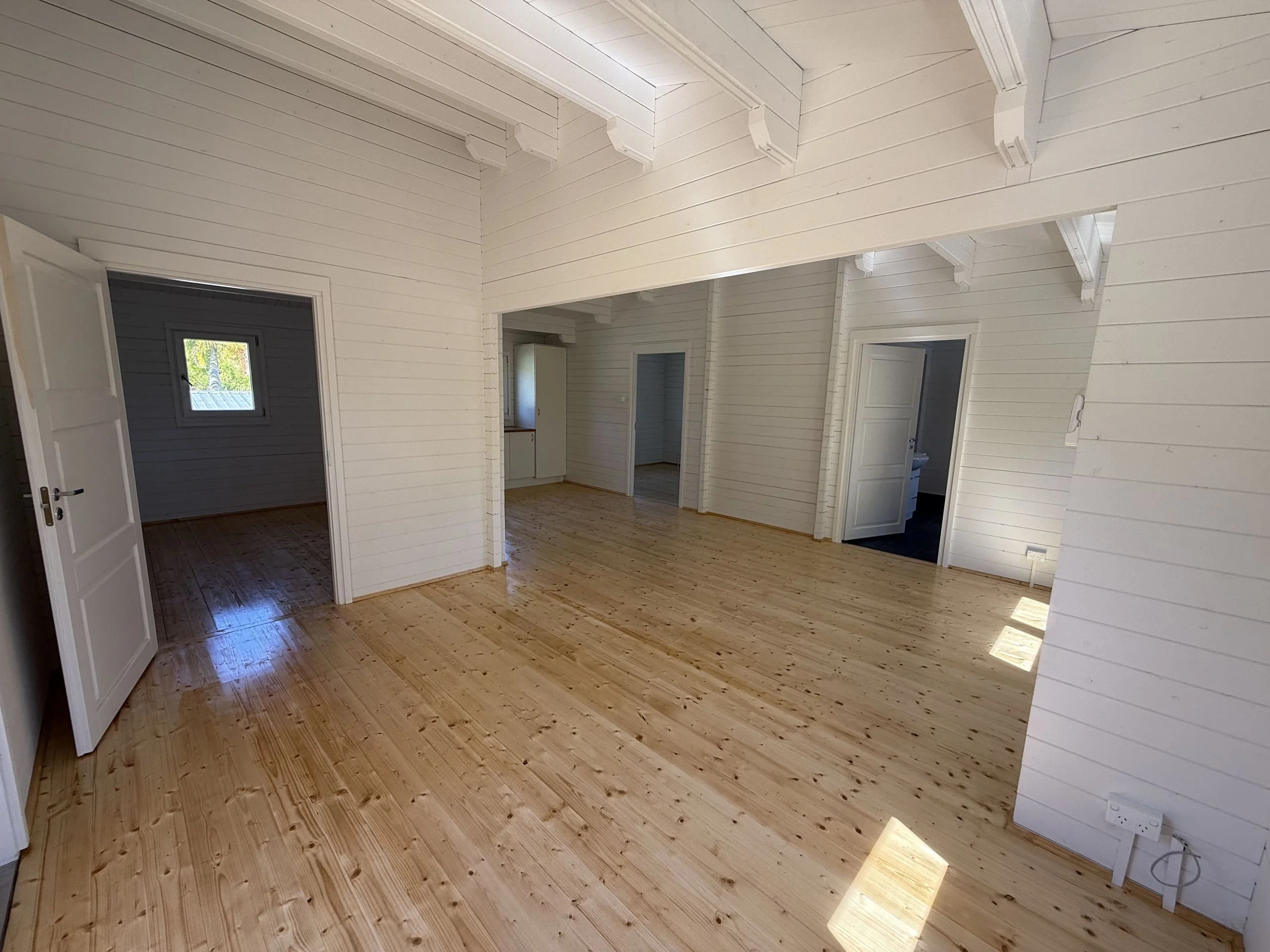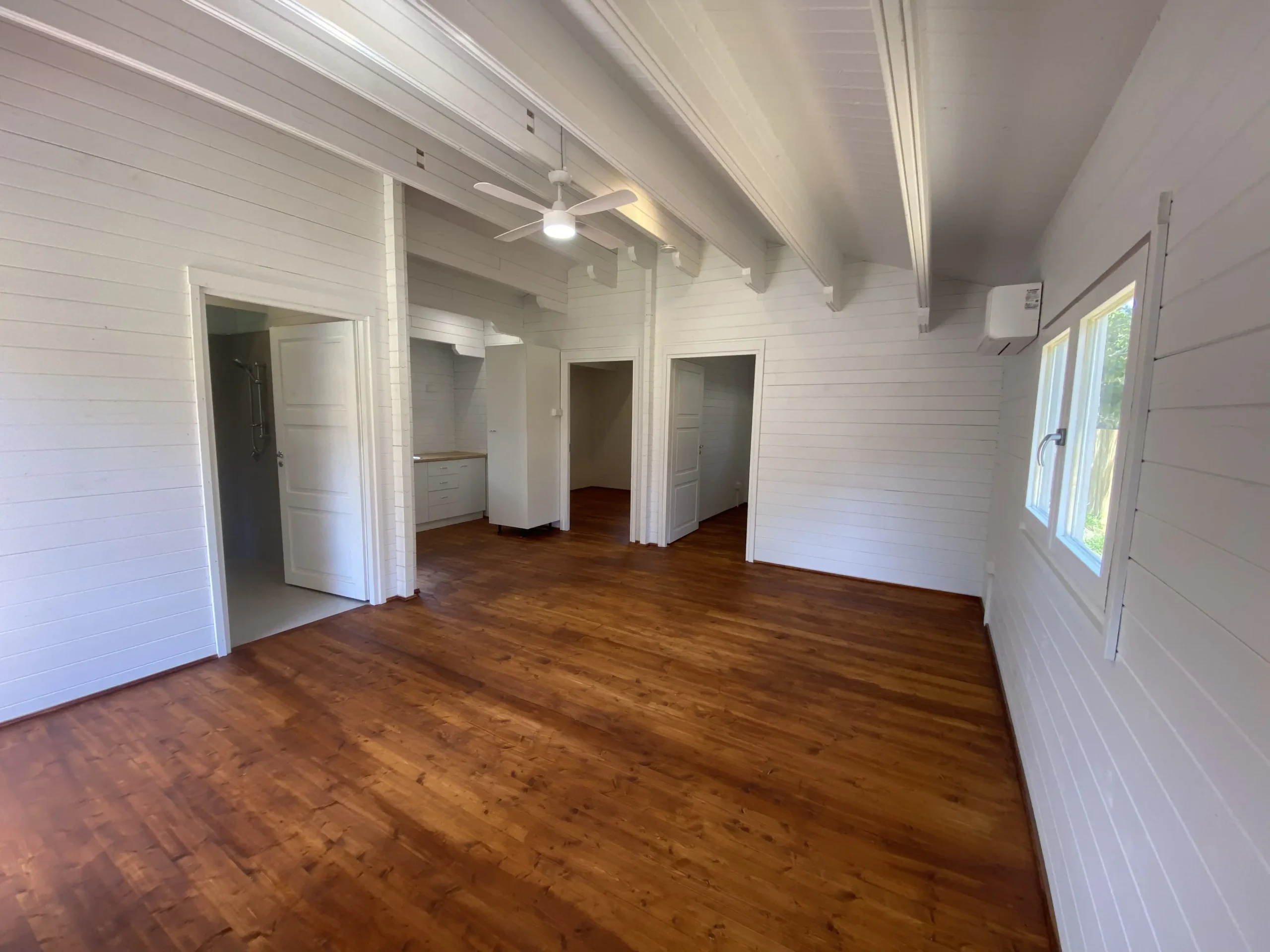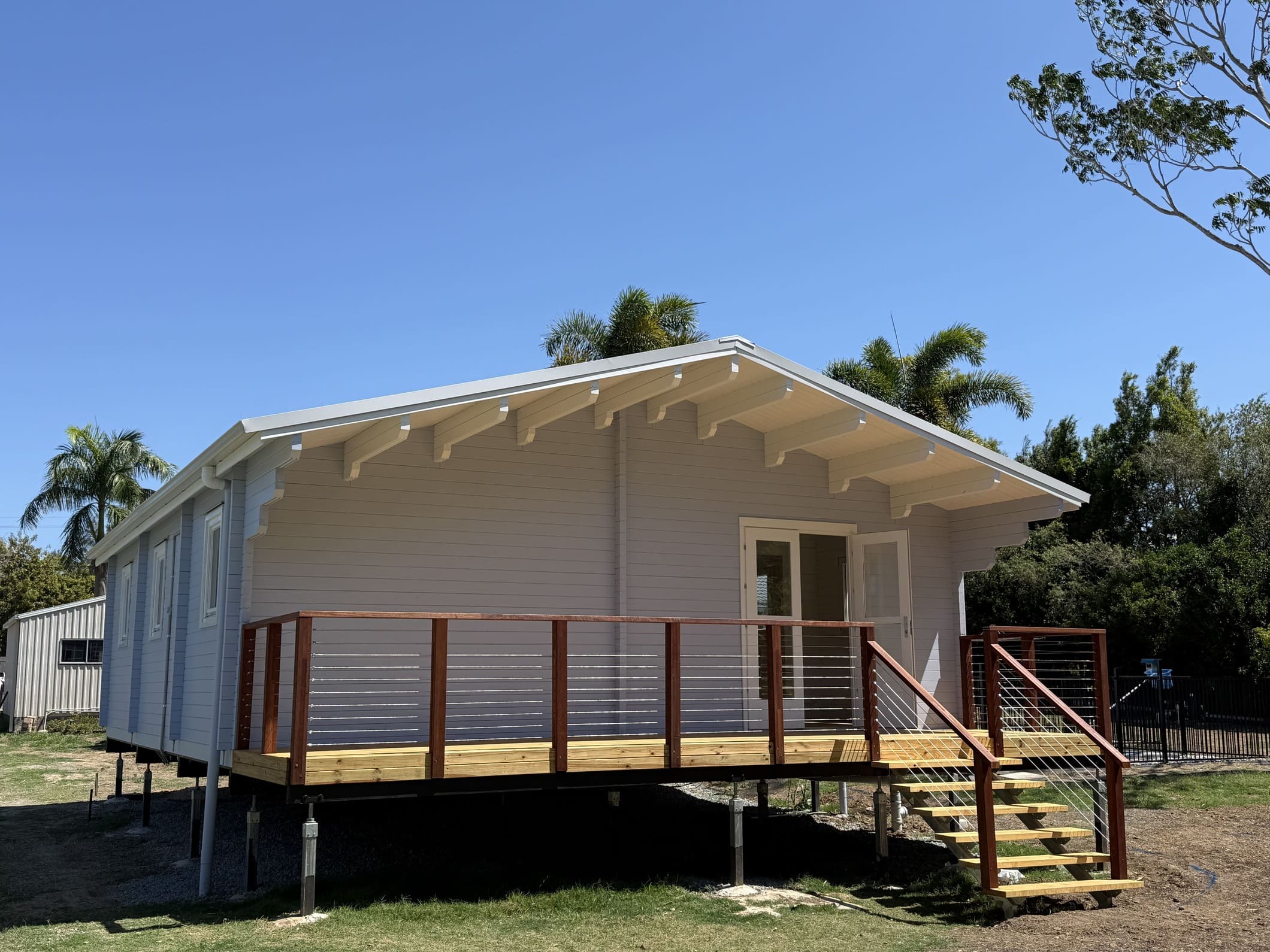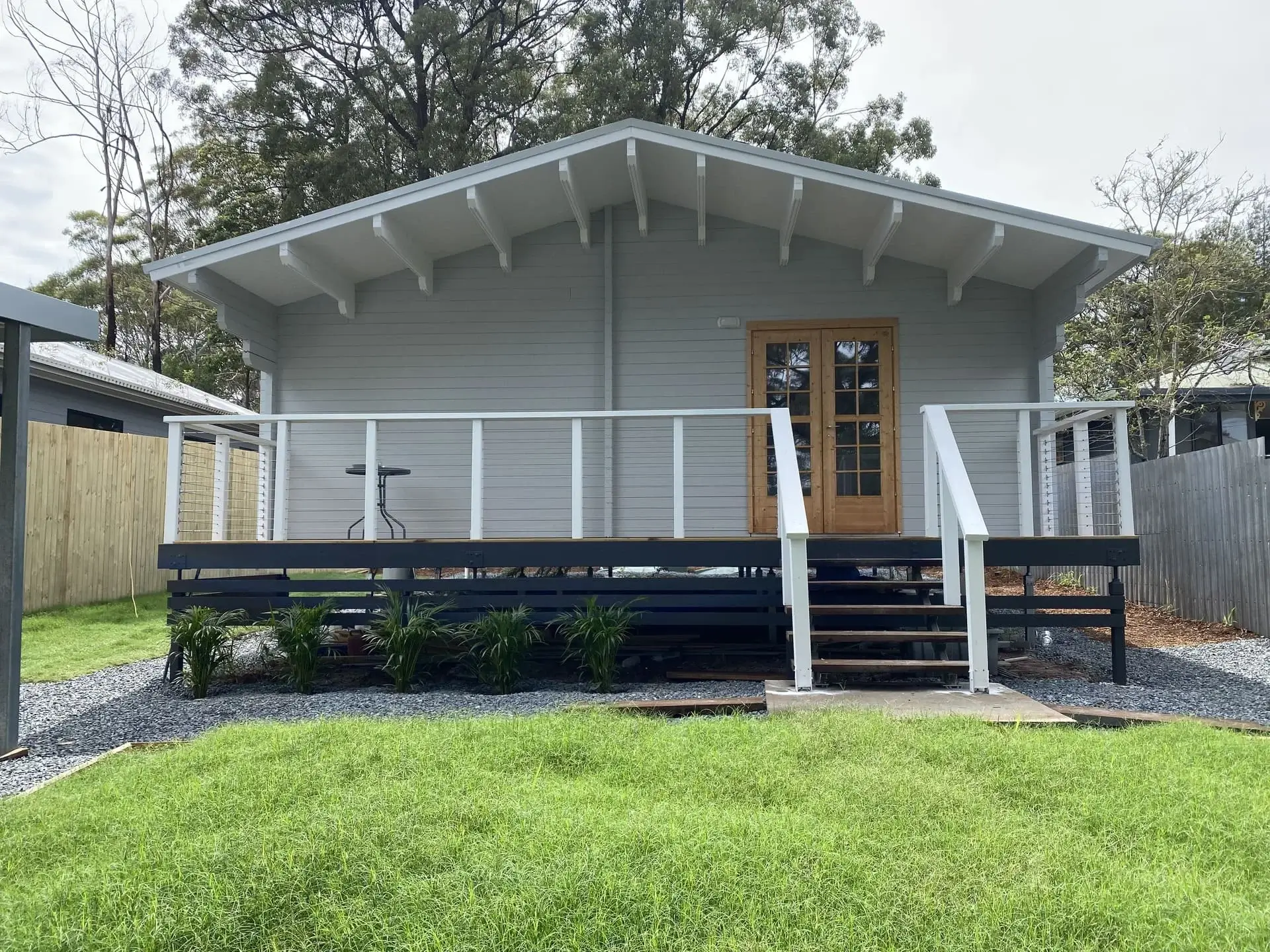Summary
Building a granny flat is a substantial financial undertaking, and choosing the right financing method is crucial to ensuring a smooth and stress-free experience. Various loan options are available, each with its own advantages and considerations. Homeowners may choose from home equity loans, which allow them to borrow against their existing property’s value, or construction loans, which are tailored for funding building projects and provide staggered payments as construction progresses. Government incentives and grants can also help offset costs, depending on eligibility and location.
For those without sufficient home equity or who prefer an alternative approach, personal loans and private lending solutions offer flexible financing but often come with higher interest rates and shorter repayment periods. Alternative funding sources such as peer-to-peer lending or family contributions may also be viable options.
Beyond securing the right loan, financial planning plays a pivotal role in successfully managing the project. Establishing a well-defined budget, comparing contractor quotes, understanding loan terms, and preparing for hidden costs are all essential to avoiding financial pitfalls. Ensuring a stable credit score and seeking professional financial advice can further optimize loan conditions and long-term affordability.
Understanding Loan Options for Your Granny Flat
Financing a granny flat requires careful evaluation of available options to ensure affordability and financial stability. The right loan choice depends on factors such as home equity, credit score, and repayment capacity. Below are the most common ways to secure funding for your granny flat project.
1. Home Equity Loans
Home equity loans are one of the most popular ways to finance a granny flat, especially for homeowners who have built up significant equity in their primary property. These loans allow borrowers to tap into the value of their home, receiving a lump sum that can be used for construction. Because they are secured by the home itself, home equity loans often come with more favorable interest rates than personal loans or credit cards, making them an attractive option for large-scale home improvement projects.
How Home Equity Loans Work
Homeowners can borrow a percentage of their home’s value, typically up to 80% of the equity they have built. The loan is then repaid in fixed monthly installments over a set term, usually between 10 to 30 years. Since the loan is secured against the property, lenders offer competitive interest rates, and payments remain predictable.
Advantages of Home Equity Loans
- Lower Interest Rates: Because they are secured by property, home equity loans usually offer lower interest rates compared to unsecured personal loans or credit lines.
- Fixed Repayment Terms: Borrowers benefit from structured repayment plans, making it easier to budget monthly expenses.
- Access to Larger Loan Amounts: Since borrowing power is based on property value, these loans provide larger sums compared to personal loans.
- Tax Deductibility: In some regions, interest payments on home equity loans used for home improvements may be tax-deductible, helping homeowners save money.
- Longer Repayment Periods: Unlike short-term personal loans, home equity loans allow homeowners to spread payments over many years, reducing financial strain.
Things to Consider Before Applying
- Property Value & Equity Requirements: Borrowers need to have enough home equity to qualify, which may limit eligibility for new homeowners.
- Risk to Homeownership: Since the loan is secured against the house, failure to meet repayment obligations could result in foreclosure.
- Longer Approval Process: Compared to personal loans, home equity loans may take more time for approval due to property appraisals and additional documentation requirements.
- Closing Costs & Fees: Some lenders charge application fees, origination costs, or prepayment penalties, which should be factored into overall expenses.
Home equity loans provide a powerful financing tool for building a granny flat, offering competitive rates and substantial borrowing power. However, it is crucial to carefully assess one’s financial situation and repayment capacity before leveraging home equity for construction purposes.
2. Construction Loans
Construction loans are specialized financing options designed specifically for funding building projects, such as granny flats. Unlike traditional loans, which provide a lump sum upfront, construction loans release funds in stages as the project progresses. This method ensures that funds are allocated according to specific construction milestones, reducing financial risks and preventing overspending.
How Construction Loans Work
Construction loans operate on a drawdown structure, meaning funds are disbursed in phases instead of all at once. Typically, the loan is divided into different stages, including site preparation, foundation laying, framing, and final completion. As each phase is completed, a portion of the loan is released to cover labor and material costs. Interest is only charged on the amount that has been drawn, reducing the financial burden during early construction stages.
Advantages of Construction Loans
- Funds Released in Stages: Ensures that money is used efficiently and prevents misallocation of funds.
- Interest Paid Only on Drawn Amounts: Borrowers only pay interest on the portion of the loan they have accessed, rather than the entire approved amount.
- Short-Term Financing with Conversion Options: Many lenders offer an option to convert the loan into a long-term mortgage upon project completion.
- Better Budgeting Control: Staggered payments help keep expenses within budget and provide accountability at each stage of construction.
- Flexibility in Loan Amounts: Lenders assess the final project cost rather than existing home equity, making it a viable option for those without significant equity.
Eligibility and Requirements
- Detailed Construction Plan: Lenders require detailed blueprints, building permits, and cost estimates from licensed builders.
- Licensed Builder Requirement: Some lenders only approve loans if the construction is carried out by a professional builder rather than an owner-builder.
- Good Credit Score & Financial Stability: A strong financial profile improves approval chances and loan terms.
- Down Payment Requirement: Many lenders require borrowers to contribute at least 20% of the total project cost upfront.
Potential Drawbacks of Construction Loans
- Shorter Loan Terms: Typically, construction loans must be repaid or converted into a mortgage within 12 to 24 months.
- Higher Interest Rates: Compared to traditional home loans, construction loans often come with slightly higher interest rates due to the perceived risk.
- Stricter Qualification Criteria: Borrowers must provide extensive documentation, including construction contracts and cost breakdowns, to qualify.
- Complex Approval Process: Lenders assess project feasibility, market conditions, and borrower financials before approving the loan.
3. Government Grants and Incentives
Government grants and incentives can significantly reduce the financial burden of building a granny flat. Depending on your location, various programs exist to encourage housing development, energy efficiency, and affordable living solutions. These grants are often designed to support first-time homeowners, promote sustainable construction, or incentivize rental housing.
Types of Government Assistance
- First Home Owner Grants (FHOG): In some states and countries, first-time homeowners may qualify for financial support when building a granny flat, provided they meet specific eligibility criteria.
- Energy Efficiency Incentives: Many governments offer rebates and grants for eco-friendly construction choices, such as installing solar panels, using energy-efficient appliances, or incorporating water-saving fixtures.
- Affordable Housing Initiatives: Some programs support homeowners who intend to rent out their granny flat at an affordable rate, contributing to local housing supply.
- Tax Benefits and Deductions: Homeowners who rent their granny flats may be eligible for tax deductions on interest payments, maintenance expenses, and depreciation.
Advantages of Government Grants and Incentives
- Reduced Construction Costs: Grants and rebates can significantly lower the financial burden of building a granny flat.
- Encourages Sustainable Building: Incentives for energy-efficient materials and systems help homeowners save on long-term utility costs.
- Increases Property Value: Government-supported improvements often enhance property appeal and market value.
- Lower Financial Risk: By utilizing grants, homeowners may reduce reliance on loans and minimize interest-related expenses.
- Potential Rental Benefits: Incentives for affordable rental housing can provide additional financial support for property owners.
Key Considerations Before Applying
- Strict Eligibility Criteria: Many grants have specific income limits, property conditions, or primary residence requirements.
- Application Process Can Be Lengthy: Government funding programs often require detailed documentation, permits, and proof of compliance.
- Availability Varies by Location: Not all regions offer the same level of financial support; checking local regulations is essential.
- Potential Tax Implications: Some grants may need to be reported as taxable income, impacting overall financial planning.
Government grants and incentives present a valuable opportunity to offset construction costs and encourage sustainable building practices. Homeowners should research available programs, consult financial experts, and apply for grants that align with their granny flat development goals.
4. Personal Loans and Private Lenders
For homeowners who do not have sufficient equity in their property or prefer a more flexible financing option, personal loans or private lending can be viable alternatives. These options allow homeowners to secure funding without leveraging home equity, but they often come with higher interest rates and shorter repayment periods. Understanding the pros and cons of these financing methods is crucial for making an informed decision.
How Personal Loans Work
Personal loans are typically unsecured, meaning they do not require collateral. Lenders approve loans based on factors such as credit score, income, and debt-to-income ratio. Loan amounts vary depending on the lender, and repayment terms range from a few years to a decade. Since personal loans are unsecured, they tend to have higher interest rates than secured loans like home equity loans.
Pros of Personal Loans
- Quick Approval Process: Many lenders offer fast approval times, sometimes within 24-48 hours, making personal loans ideal for homeowners who need immediate funding.
- No Collateral Required: Unlike home equity loans, personal loans do not put property at risk in case of default.
- Flexible Use of Funds: Personal loans can be used for construction, furnishing, landscaping, or any other associated costs of building a granny flat.
- Predictable Repayment Schedule: Fixed interest rates and structured repayment terms make budgeting easier.
Cons of Personal Loans
- Higher Interest Rates: Due to their unsecured nature, personal loans usually have higher interest rates compared to home equity or construction loans.
- Lower Loan Limits: Borrowing capacity is often smaller than secured loans, potentially requiring additional financing sources.
- Shorter Repayment Terms: Monthly payments can be higher due to shorter loan durations, increasing financial strain.
- Stricter Eligibility Requirements: Borrowers with low credit scores may struggle to secure favorable loan terms.
Private Lending Options
Private lenders offer alternative financing options outside of traditional banks and credit unions. These lenders can include peer-to-peer lending platforms, private investors, or even family members. Private lending can be a suitable choice for those who may not qualify for conventional loans due to credit limitations or unconventional income sources.
Advantages of Private Lending
- Flexible Loan Terms: Agreements can be negotiated between the borrower and lender, offering more customized repayment schedules.
- Potentially Faster Approval: Private lenders often have less stringent requirements than banks, resulting in quicker access to funds.
- Opportunity for Lower Documentation Requirements: Some private lenders require fewer documents compared to banks, making the process simpler.
Disadvantages of Private Lending
- Higher Interest Rates and Fees: Private loans often come with higher costs, as lenders take on more risk.
- Less Consumer Protection: Traditional lenders follow strict regulations, whereas private lenders may operate with fewer legal protections for borrowers.
- Limited Availability: Not all private lenders offer financing for home improvement projects, making research essential.
Alternative Private Lending Solutions
- Peer-to-Peer Lending: Online platforms connect borrowers with private investors willing to fund loans.
- Specialized Home Improvement Loans: Some non-traditional lenders focus on financing home renovations and additions.
- Joint Ventures or Family Loans: Homeowners can partner with family members or investors to finance their granny flat project.
Personal loans and private lending can serve as valuable financing alternatives, particularly for those who need quick access to funds or do not qualify for traditional loans. However, the higher costs and shorter repayment periods mean careful financial planning is essential before committing to these options.
Financial Planning Tips for Your Granny Flat
Regardless of the financing method chosen, proper financial planning ensures a smoother experience and helps avoid unexpected costs. Here are essential strategies to consider:
Smart Financial Planning Strategies
- Set a Clear Budget: Determine a realistic budget for your granny flat project, including construction, permits, utilities, and furnishing costs.
- Get Multiple Quotes from Builders: Comparing prices from different contractors ensures you receive the best value for your investment.
- Plan for Hidden Costs: Account for potential expenses such as landscaping, council fees, and ongoing maintenance.
- Check Your Credit Score: A good credit rating increases your chances of securing favorable loan terms.
- Understand Loan Terms and Interest Rates: Always review loan agreements carefully to avoid unexpected fees or conditions.
- Consider Future Costs: Factor in maintenance, insurance, and utility expenses for long-term financial sustainability.
- Work with a Financial Advisor: Consulting a professional can help you optimize your financing plan and ensure a stress-free process.
Conclusion
Financing your granny flat requires careful consideration of loan options and financial planning strategies. Whether you choose a home equity loan, construction loan, government grant, or personal loan, understanding the terms and benefits will help you make the best decision for your needs.
By exploring different loan types, evaluating eligibility criteria, and planning for future costs, you can confidently finance your granny flat project while maintaining financial security. Proper planning not only ensures affordability but also maximizes the return on your investment in the long run.
If you’re considering building a granny flat and need expert guidance on financing, speaking with a financial expert or mortgage broker can provide valuable insights tailored to your situation. Take the time to explore all available options to ensure a smooth and successful project.
Ready to finance your granny flat? Start by exploring your loan options, consulting with a financial expert, and choosing the best financing solution for your needs. Take the first step by booking your free Granny Flat expert consultation here!





